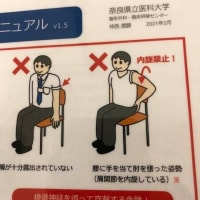さきほどの「重複感染@エジプト」のニュースで上がってしまった血圧を、いくらか戻してくれそうな発表を米メリーランド大がおこなっています。
- フェレットを使った動物実験。3種類のウイルスに暴露させたところ、A/H1N1ウイルスが他のウイルスと混ざり合って”superbug(強毒化した恐ろしい
 、ほどの意味の俗語)”を発生させる可能性は低い。
、ほどの意味の俗語)”を発生させる可能性は低い。 - 他方、A/H1N1ウイルスは他のウイルスを押しのけ(outcompeted)、他のウイルスの倍以上増殖した。また、肺を含む、呼吸器系のより深部でも増殖した。
要は、現在のA/H1N1ウイルスは協調性に欠けたヤツで、他のウイルスと協力するどころか、押しのけて自分だけ増殖する孤高の だから遺伝子交雑→強毒化なんてそうやすやす起こらないよというお話のようです。 ヒトにおいてもそうなのか、血圧を下げて冷静にフォローしたいところです。
だから遺伝子交雑→強毒化なんてそうやすやす起こらないよというお話のようです。 ヒトにおいてもそうなのか、血圧を下げて冷静にフォローしたいところです。
ソースは9月1日付sciencenews↓
http://www.sciencedaily.com/releases/2009/09/090901091731.htm
H1N1 Pandemic Virus Does Not Mutate Into 'Superbug' In Lab Study
H1N1 Pandemic Virus Does Not Mutate Into 'Superbug' In Lab Study
ScienceDaily (Sep. 1, 2009) — A laboratory study by University of Maryland researchers suggests that some of the worst fears about a virulent H1N1 pandemic flu season may not be realized this year, but does demonstrate the heightened communicability of the virus.
Using ferrets exposed to three different viruses, the Maryland researchers found no evidence that the H1N1 pandemic variety, responsible for the so-called swine flu, combines in a lab setting with other flu strains to form a more virulent 'superbug.' Rather, the pandemic virus prevailed and out-competed the other strains, reproducing in the ferrets, on average, twice as much.
The researchers believe their study is the first to examine how the pandemic virus interacts with other flu viruses. The findings are newly published in an online scientific journal designed to fast-track science research and quickly share results with other investigators, PLOS Currents.
"The H1N1 pandemic virus has a clear biological advantage over the two main seasonal flu strains and all the makings of a virus fully adapted to humans," says virologist Daniel Perez, the lead researcher and program director of the University of Maryland-based Prevention and Control of Avian Influenza Coordinated Agricultural Project.
"I'm not surprised to find that the pandemic virus is more infectious, simply because it's new, so hosts haven't had a chance to build immunity yet. Meanwhile, the older strains encounter resistance from hosts' immunity to them," Perez adds.
Some of the animals who were infected with both the new virus and one of the more familiar seasonal viruses (H3N2) developed not only respiratory symptoms, but intestinal illness as well. Perez and his team call for additional research to see whether this kind of co-infection and multiple symptoms may account for some of the deaths attributed to the new virus.
Among other research findings, the pandemic virus successfully established infections deeper in the ferret's respiratory system, including the lungs. The H1 and H3 seasonal viruses remained in the nasal passages.
"Our findings underscore the need for vaccinating against the pandemic flu virus this season," Perez concludes. "The findings of this study are preliminary, but the far greater communicability of the pandemic virus serves as a clearly blinking warning light."
Perez and his team used samples of the H1N1 pandemic variety from last April's initial outbreak of the so-called swine flu.
The research is funded by the National Institute of Allergy and Infectious Diseases, part of the National Institutes of Health.


























